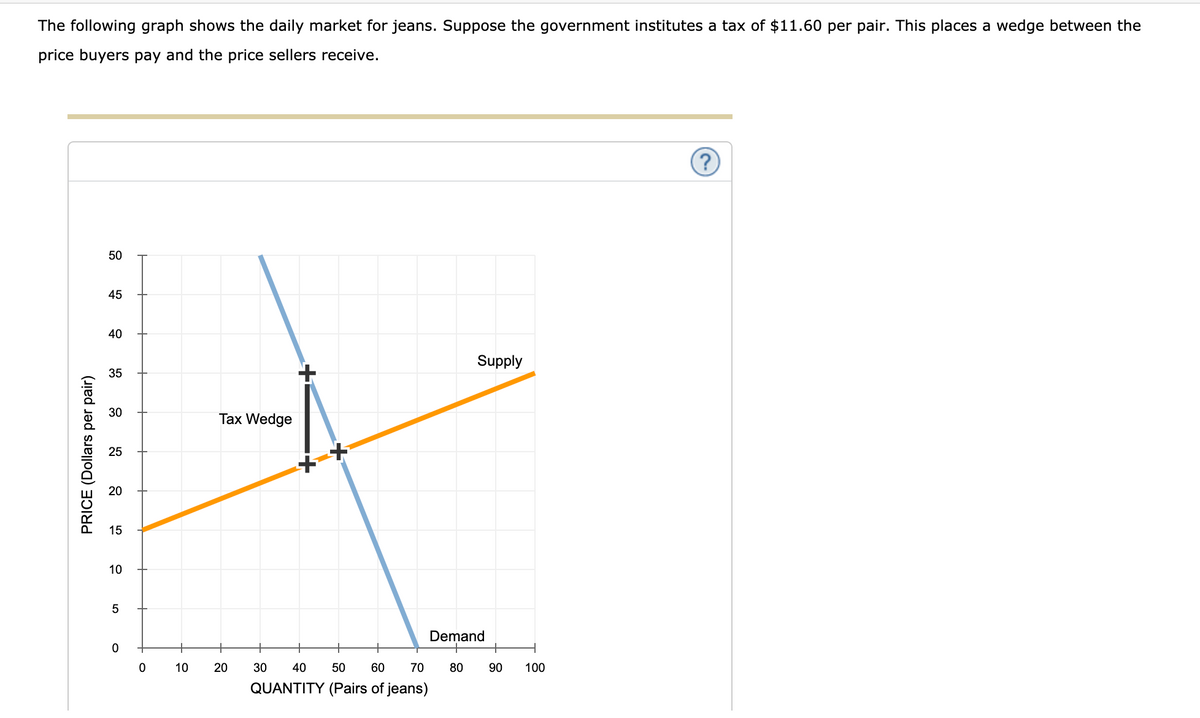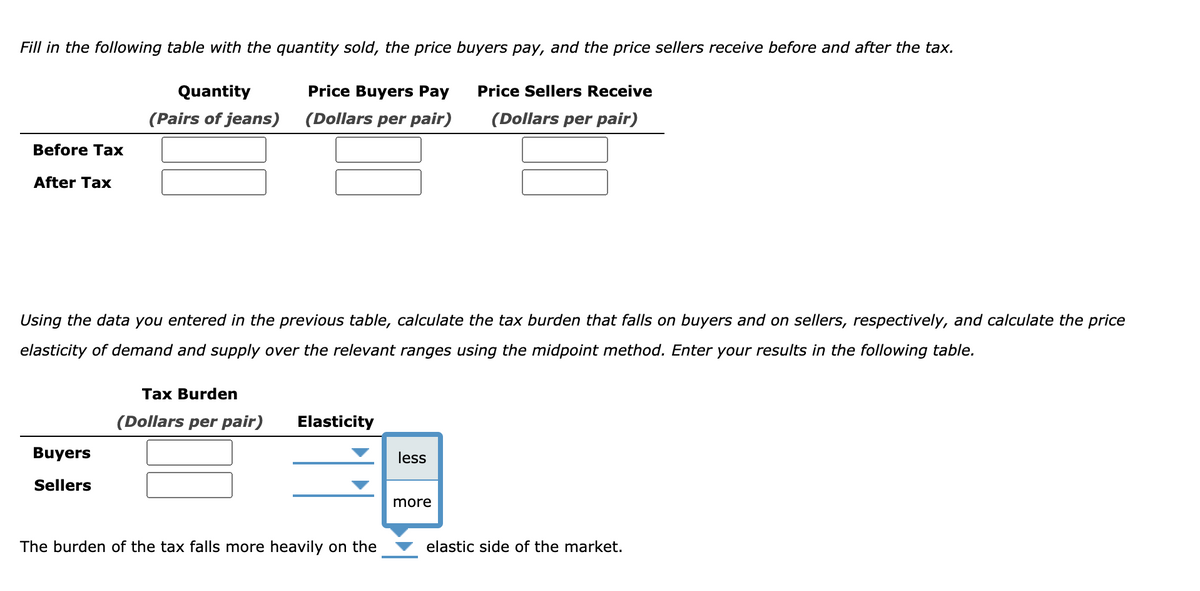The following graph shows the daily market for jeans. Suppose the government institutes a tax of $11.60 per pair. This places a wedge between the price buyers pay and the price sellers receive. 50 45 40 Supply 35 30 Tax Wedge 25 20 15 10 Demand 10 20 30 40 50 60 70 80 90 100 PRICE (Dollars per pair)
The following graph shows the daily market for jeans. Suppose the government institutes a tax of $11.60 per pair. This places a wedge between the price buyers pay and the price sellers receive. 50 45 40 Supply 35 30 Tax Wedge 25 20 15 10 Demand 10 20 30 40 50 60 70 80 90 100 PRICE (Dollars per pair)
Chapter1: Making Economics Decisions
Section: Chapter Questions
Problem 1QTC
Related questions
Question
EFFECT OF A TAX ON BUYERS AND SELLERS

Transcribed Image Text:The following graph shows the daily market for jeans. Suppose the government institutes a tax of $11.60 per pair. This places a wedge between the
price buyers pay and the price sellers receive.
(?
50
45
40
Supply
35
30
Tax Wedge
25
20
15
10
Demand
10
20
30
40
50
60
70
80
90
100
QUANTITY (Pairs of jeans)
PRICE (Dollars per pair)
~)

Transcribed Image Text:Fill in the following table with the quantity sold, the price buyers pay, and the price sellers receive before and after the tax.
Quantity
Price Buyers Pay
Price Sellers Receive
(Pairs of jeans)
(Dollars per pair)
(Dollars per pair)
Before Tax
After Tax
Using the data you entered in the previous table, calculate the tax burden that falls on buyers and on sellers, respectively, and calculate the price
elasticity of demand and supply over the relevant ranges using the midpoint method. Enter your results in the following table.
Tax Burden
(Dollars per pair)
Elasticity
Buyers
less
Sellers
more
The burden of the tax falls more heavily on the
elastic side of the market.
Expert Solution
This question has been solved!
Explore an expertly crafted, step-by-step solution for a thorough understanding of key concepts.
This is a popular solution!
Trending now
This is a popular solution!
Step by step
Solved in 2 steps

Recommended textbooks for you


Principles of Economics (12th Edition)
Economics
ISBN:
9780134078779
Author:
Karl E. Case, Ray C. Fair, Sharon E. Oster
Publisher:
PEARSON

Engineering Economy (17th Edition)
Economics
ISBN:
9780134870069
Author:
William G. Sullivan, Elin M. Wicks, C. Patrick Koelling
Publisher:
PEARSON


Principles of Economics (12th Edition)
Economics
ISBN:
9780134078779
Author:
Karl E. Case, Ray C. Fair, Sharon E. Oster
Publisher:
PEARSON

Engineering Economy (17th Edition)
Economics
ISBN:
9780134870069
Author:
William G. Sullivan, Elin M. Wicks, C. Patrick Koelling
Publisher:
PEARSON

Principles of Economics (MindTap Course List)
Economics
ISBN:
9781305585126
Author:
N. Gregory Mankiw
Publisher:
Cengage Learning

Managerial Economics: A Problem Solving Approach
Economics
ISBN:
9781337106665
Author:
Luke M. Froeb, Brian T. McCann, Michael R. Ward, Mike Shor
Publisher:
Cengage Learning

Managerial Economics & Business Strategy (Mcgraw-…
Economics
ISBN:
9781259290619
Author:
Michael Baye, Jeff Prince
Publisher:
McGraw-Hill Education